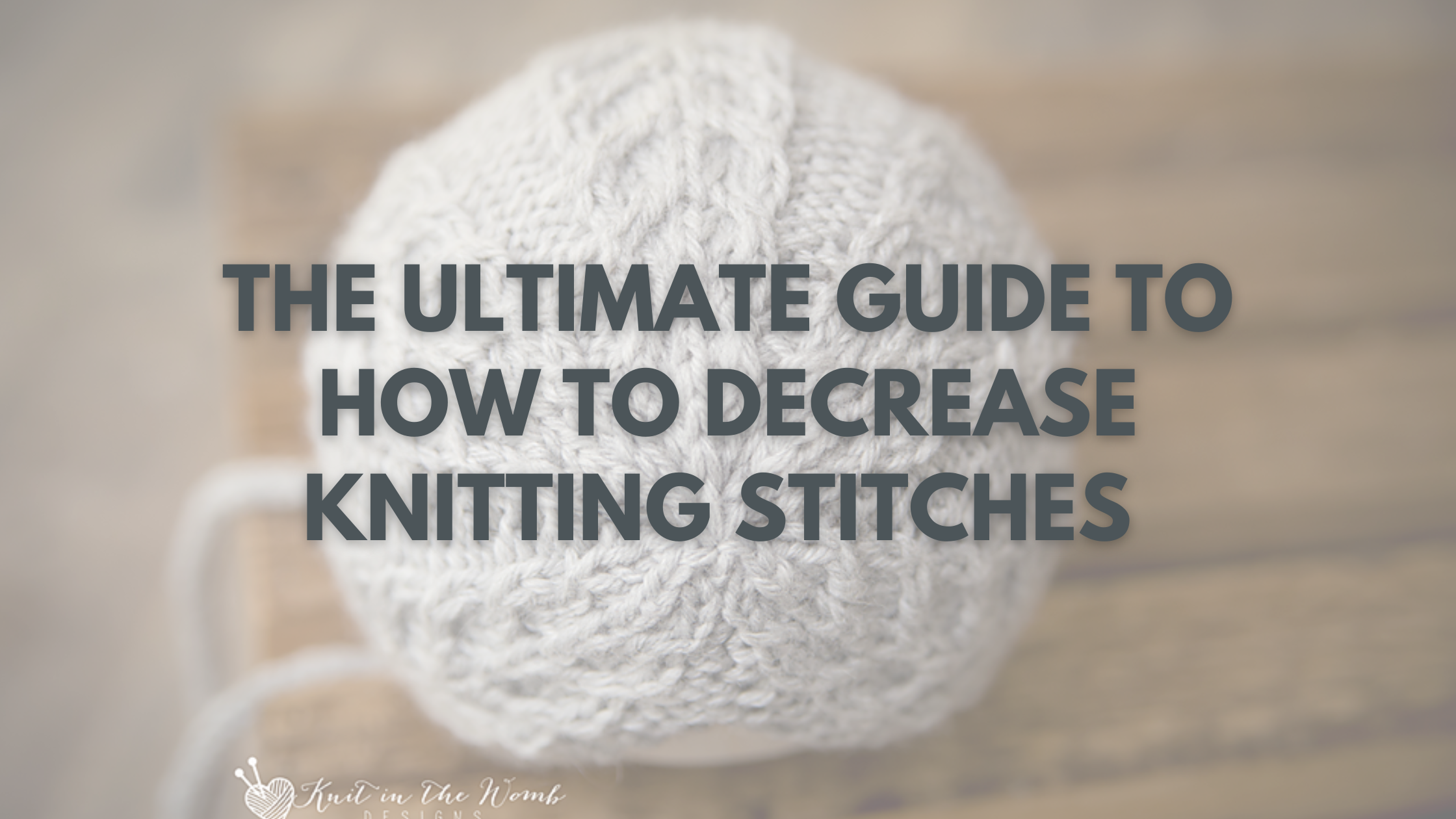Discover the art of decreasing knitting stitches with this guide! Explore techniques, practice with free patterns, and learn about the perfect tools for the job. Click here to find the free patterns mentioned in this post.

Knitting is a creative journey, and learning how to decrease knitting stitches is a crucial skill that takes your projects to the next level. Whether you’re shaping the crown of a hat or adding dimension to a sweater, decreases are vital for crafting polished and well-fitted pieces. Let me walk you through the most common methods, explain when to use them, and give you five free patterns to practice on.
As we dive in, I’ll also share why KnitPicks Reflections needles (affiliate link) are my go-to choice for decreases. These needles feature perfectly tapered tips, making it easy to work with all yarn weights.
What Are Decreases in Knitting?
Decreases reduce the number of stitches on your needle. This creates shaping for projects like sleeves, necklines, hats, and mittens. Mastering how to decrease knitting stitches ensures your finished pieces look professional and fit comfortably.
Common Types of Knitting Decreases
1. K2tog (Knit Two Together)
The K2tog is one of the simplest and most popular decreases. It leans to the right, making it ideal for symmetrical shaping.
- When to Use: Crown shaping for hats, side decreases for sweaters, or anywhere a subtle decrease is needed.
- How to Do It: Insert your needle through two stitches as if to knit, then knit them together as one.
2. SSK (Slip, Slip, Knit)
SSK creates a left-leaning decrease. It pairs well with K2tog for balanced shaping.
- When to Use: Along raglan seams, neckline shaping, or decorative decreases.
- How to Do It: Slip two stitches knitwise, return them to the left needle, then knit them together through the back loop.
3. P2tog (Purl Two Together)
This is the purl-side equivalent of K2tog, producing a right-leaning decrease.
- When to Use: Inside ribbing patterns or on the purl side of stockinette stitch.
- How to Do It: Insert your needle through two stitches as if to purl, then purl them together.
4. SSP (Slip, Slip, Purl)
SSP creates a left-leaning decrease on the purl side.
- When to Use: Paired with P2tog for mirrored decreases in ribbing or lace.
- How to Do It: Slip two stitches knitwise, return them to the left needle, and purl them together through the back loop.
5. Centered Double Decrease (CDD) or Vertical Double Decrease
This creates a clean, centered decrease that pulls 3 stitches into one.
- When to Use: Decorative lace patterns or shaping that requires symmetry.
- How to Do It: Slip two stitches together knitwise, knit the next stitch, then pass the slipped stitches over the knit stitch.
Tools for Perfect Decreases
Working decreases cleanly requires the right tools. I always recommend KnitPicks Reflections needles (affiliate link). Their sharp tips make inserting into multiple stitches seamless, whether you’re using laceweight yarn or bulky fibers. Plus, the lightweight feel of these needles is a game-changer for longer projects.
When to Use Different Decreases
Understanding the purpose behind each decrease is key to mastering how to decrease knitting stitches. Here’s a quick guide to choosing the right method for specific scenarios:
- Hats: K2tog and SSK are perfect for crown shaping.
- Sweaters: Use SSK and K2tog for raglan seams, P2tog for purl-side shaping, and CDD for decorative elements.
- Ribbing: P2tog and SSP maintain ribbing symmetry.
- Lacework of Hats: CDD/VDD provides crisp, centered decreases for intricate patterns.
Practice Your Decreases with These Free Patterns
Ready to apply your skills? Here are five patterns from my blog that feature various decrease techniques.
- Baby Michael Sweater
This adorable baby sweater uses raglan decreases (SSK and K2tog) to create a neat, fitted look. Download this free pattern here! - Selah Beanie
Learn crown shaping with this cozy beanie. The decreases come together to form a beautiful star-like pattern. Download this free pattern here! - Cables in Cashmere Beanie
Featuring cable detailing, this pattern incorporates CDD and SSK for a polished finish. Download this free pattern here! - Youth Peter Sweater
With its classic raglan shaping, this pattern is perfect for mastering symmetrical decreases. Download this free pattern here! - Simple Bulky Mittens
Practice P2tog and SSK to shape the top of these warm mittens. Download this free pattern here!
Pro Tips for Neat Decreases
- Tension Matters: Keep your stitches snug but not too tight. This prevents gaps.
- Mark Your Decreases: Use stitch markers to track where decreases occur.
- Choose the Right Needles: KnitPicks Reflections needles (affiliate link) make decreases smooth and effortless, thanks to their precise tips.
Troubleshooting Common Decrease Mistakes
Uneven Decreases
If your decreases look uneven, double-check whether you’re pairing the correct left-leaning and right-leaning methods.
Gaps Around Decreases
Gaps can happen if your tension is too loose. Tighten up the stitches before and after the decrease.
Confusing SSK with K2tog
Remember: SSK leans left, and K2tog leans right. Keeping this distinction in mind will help your projects look polished.
Why KnitPicks Reflections Needles Are a Must-Have
For any project that involves how to decrease knitting stitches, the tools you use make a difference. KnitPicks Reflections needles (affiliate link) are my favorite because of their sharp tips and smooth surface, which glide through even the trickiest decreases. Whether you’re knitting laceweight or bulky yarn, these needles provide excellent precision.
Mastering Decreases Elevates Your Knitting
Learning how to decrease knitting stitches opens up endless possibilities for your projects. From shaping garments to creating intricate designs, decreases are a foundational skill every knitter needs.
Take it slow, practice with the patterns I’ve shared, and invest in high-quality tools like KnitPicks Reflections needles (affiliate link). You’ll soon find yourself creating beautifully shaped pieces with confidence!
Affiliate Disclosure: Some of the links in this post are affiliate links, which means I may earn a small commission at no cost to you if you make a purchase.









